Austin Motors on:
[Wikipedia]
[Google]
[Amazon]
Austin Memories
All about the history of Longbridge and models produced
The Unofficial Austin-Rover Web Resource
"Midget Cars Next?" ''Popular Mechanics'', August 1930, pp. 243–245
article on the Austin models offered in 1930 * {{Authority control * British Leyland English brands Car brands Car manufacturers of the United Kingdom Luxury motor vehicle manufacturers Companies formerly listed on the London Stock Exchange Defunct aircraft manufacturers of the United Kingdom Defunct companies based in Birmingham, West Midlands Defunct motor vehicle manufacturers of the United Kingdom Former defence companies of the United Kingdom Emergency services equipment makers Vehicle manufacturing companies established in 1905 Vehicle manufacturing companies disestablished in 1987 1905 establishments in England 1987 disestablishments in England British companies disestablished in 1987 British companies established in 1905
The Austin Motor Company Limited was an English manufacturer of

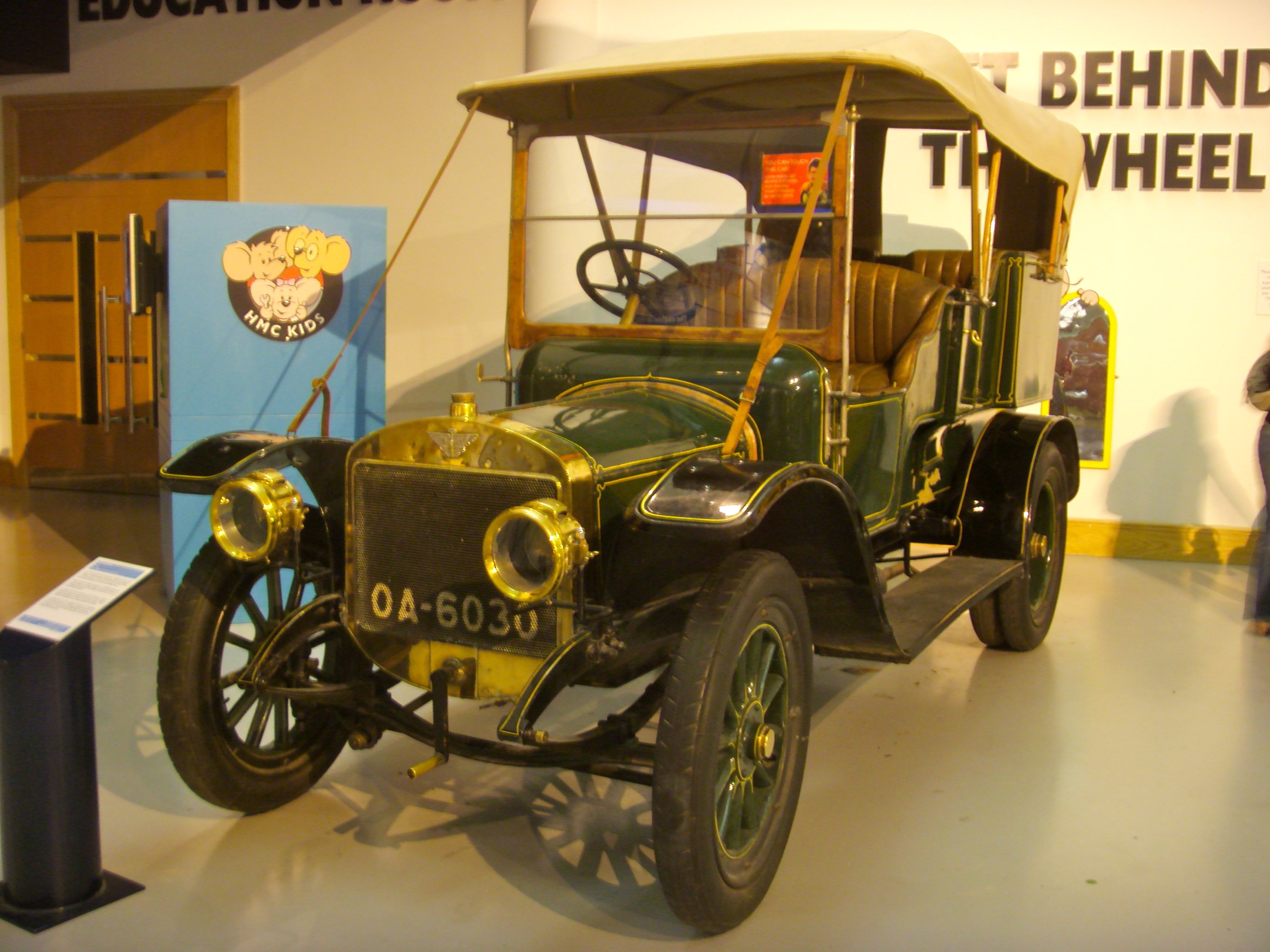
 A further injection of capital was needed in 1906 and William Harvey Du Cros (1846–1918) joined the board of directors. After that Harvey Du Cros junior of the Swift Cycle Co and Austin each held approximately half of the ordinary capital. Herbert Austin remained chairman and managing director.
A further injection of capital was needed in 1906 and William Harvey Du Cros (1846–1918) joined the board of directors. After that Harvey Du Cros junior of the Swift Cycle Co and Austin each held approximately half of the ordinary capital. Herbert Austin remained chairman and managing director.
 Austin's cars, like Wolseley's, were luxury vehicles. The published customer list included Russian Grand Dukes, Princesses, Bishops, high officials of the Spanish government and a long list of Britain's highest nobility.The Austin Motor Company (1914) Limited. ''The Times'', Monday, 9 February 1914; p. 13; Issue 40442.
SourcesSheepish start for the lion of Longbridge.
Lord Montagu of Beaulieu. ''The Times'', Saturday, 26 August 1995; pg. 3 1 Issue 65356.
Note: in 1912 Wolseley sold 3,000 cars.
In February 1914 Austin-manufactured bodies in tourer, limousine, landaulette and coupé styles could be provided with engines of 15, 20, 30 and 60 hp. RAC Rating Ambulances and commercial vehicles were also provided.
Austin became a public listed company in 1914 when the capital was increased to £650,000. At that time in number of cars produced it probably ranked fifth after Wolseley (still largest),
Austin's cars, like Wolseley's, were luxury vehicles. The published customer list included Russian Grand Dukes, Princesses, Bishops, high officials of the Spanish government and a long list of Britain's highest nobility.The Austin Motor Company (1914) Limited. ''The Times'', Monday, 9 February 1914; p. 13; Issue 40442.
SourcesSheepish start for the lion of Longbridge.
Lord Montagu of Beaulieu. ''The Times'', Saturday, 26 August 1995; pg. 3 1 Issue 65356.
Note: in 1912 Wolseley sold 3,000 cars.
In February 1914 Austin-manufactured bodies in tourer, limousine, landaulette and coupé styles could be provided with engines of 15, 20, 30 and 60 hp. RAC Rating Ambulances and commercial vehicles were also provided.
Austin became a public listed company in 1914 when the capital was increased to £650,000. At that time in number of cars produced it probably ranked fifth after Wolseley (still largest),

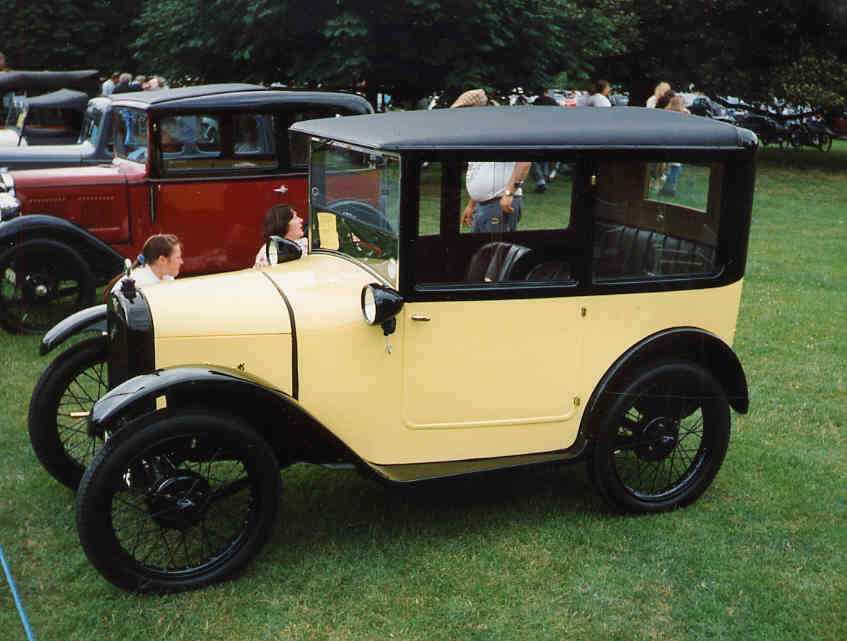 After the war Herbert Austin decided on a one-model policy based on the 3620 cc 20 hp engine. Versions included cars, commercials and even a tractor, but sales volumes were never enough to fill the vast factory built during wartime. The company went into
After the war Herbert Austin decided on a one-model policy based on the 3620 cc 20 hp engine. Versions included cars, commercials and even a tractor, but sales volumes were never enough to fill the vast factory built during wartime. The company went into 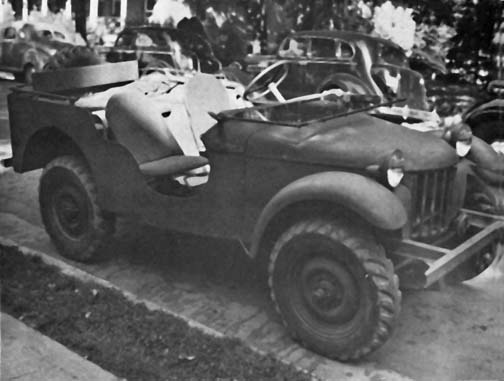 With the help of the ''Seven'', Austin weathered the worst of the depression and remained profitable through the 1930s, producing a wider range of cars which was steadily updated by the introduction of all-steel bodies, Girling brakes, and synchromesh gearboxes. However, all the engines retained the same
With the help of the ''Seven'', Austin weathered the worst of the depression and remained profitable through the 1930s, producing a wider range of cars which was steadily updated by the introduction of all-steel bodies, Girling brakes, and synchromesh gearboxes. However, all the engines retained the same 


 During
During

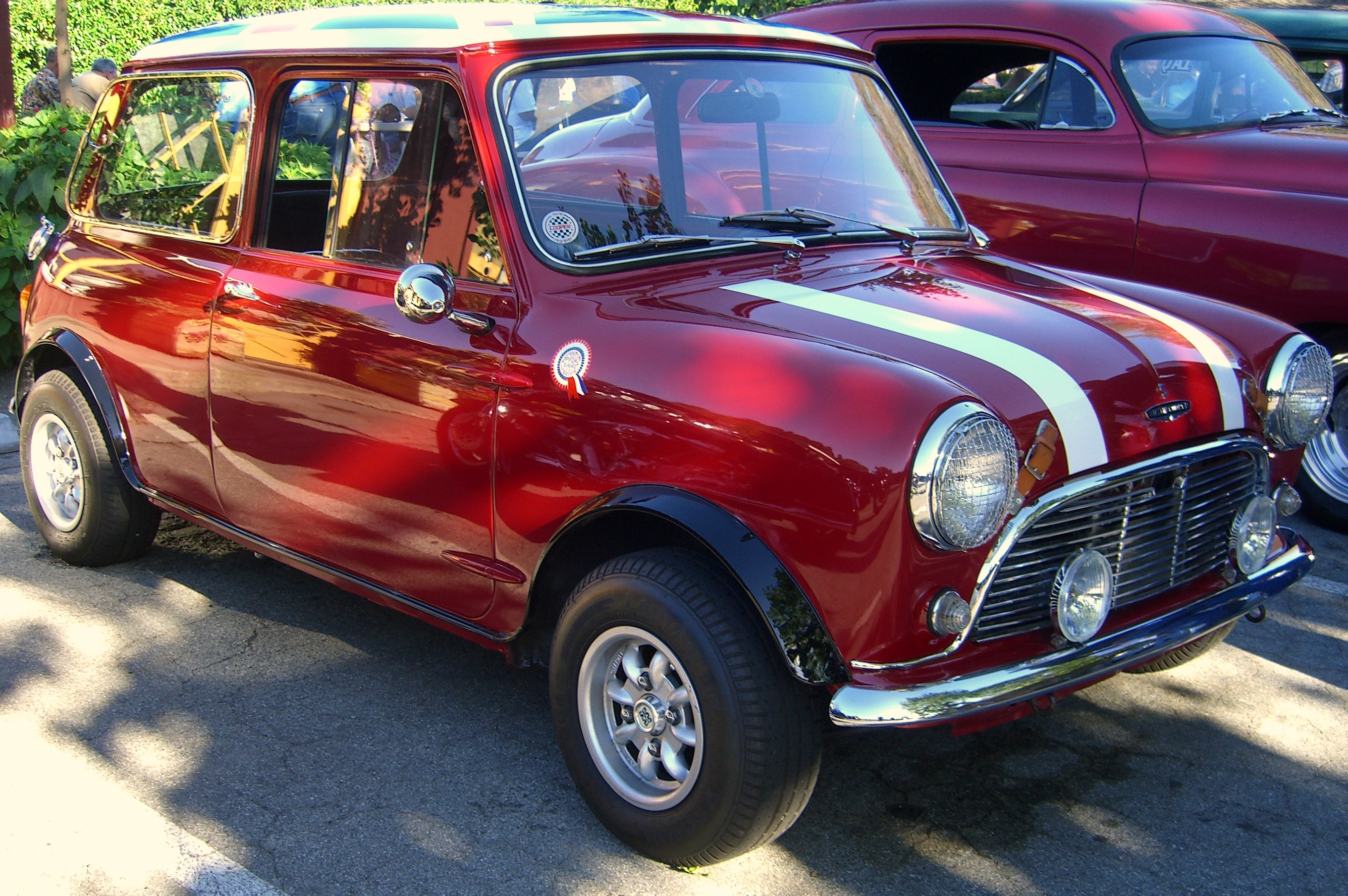 With the threat to fuel supplies resulting from the 1956 Suez Crisis, Lord asked
With the threat to fuel supplies resulting from the 1956 Suez Crisis, Lord asked
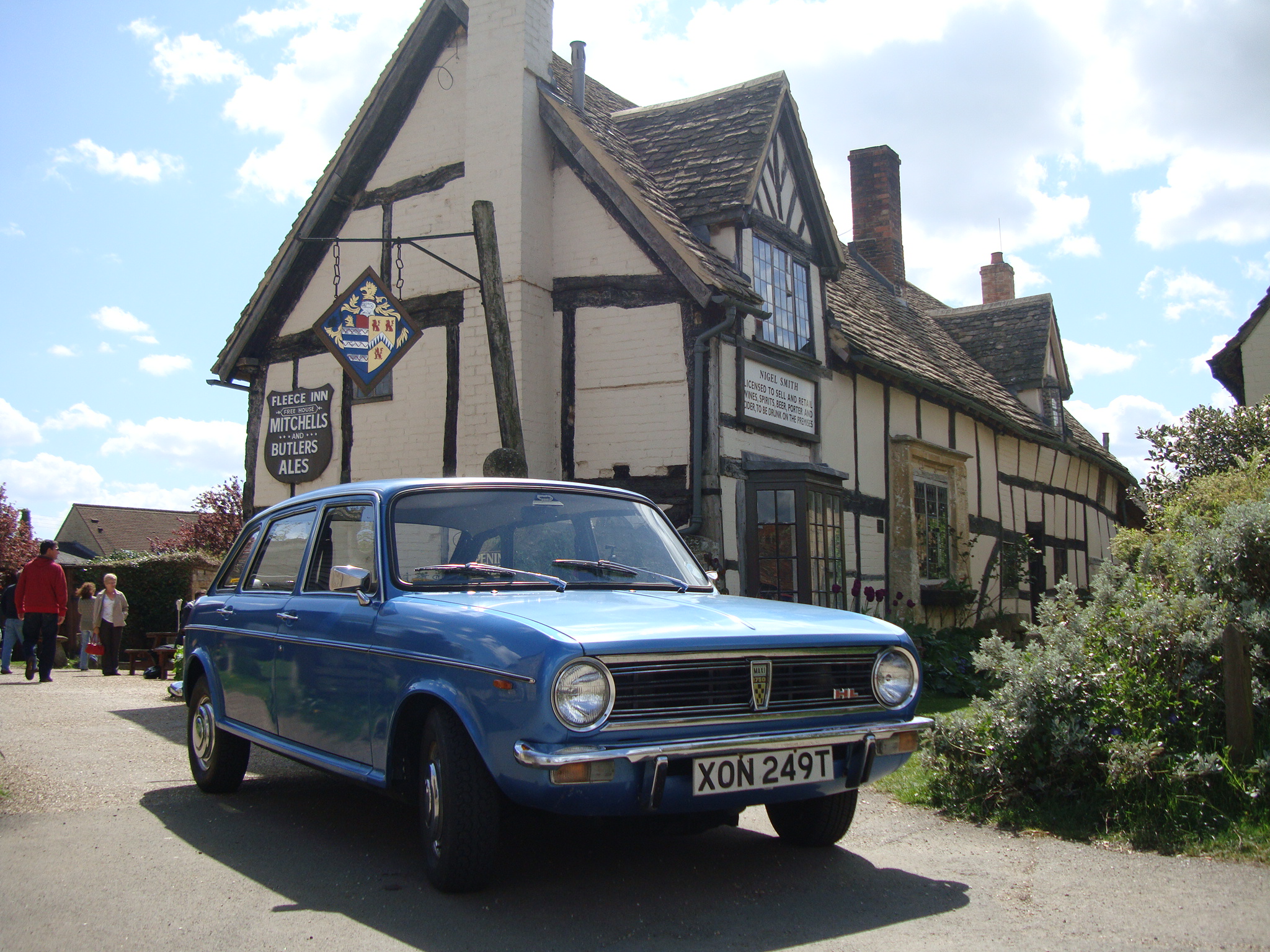 By 1970 Austin was part of the
By 1970 Austin was part of the

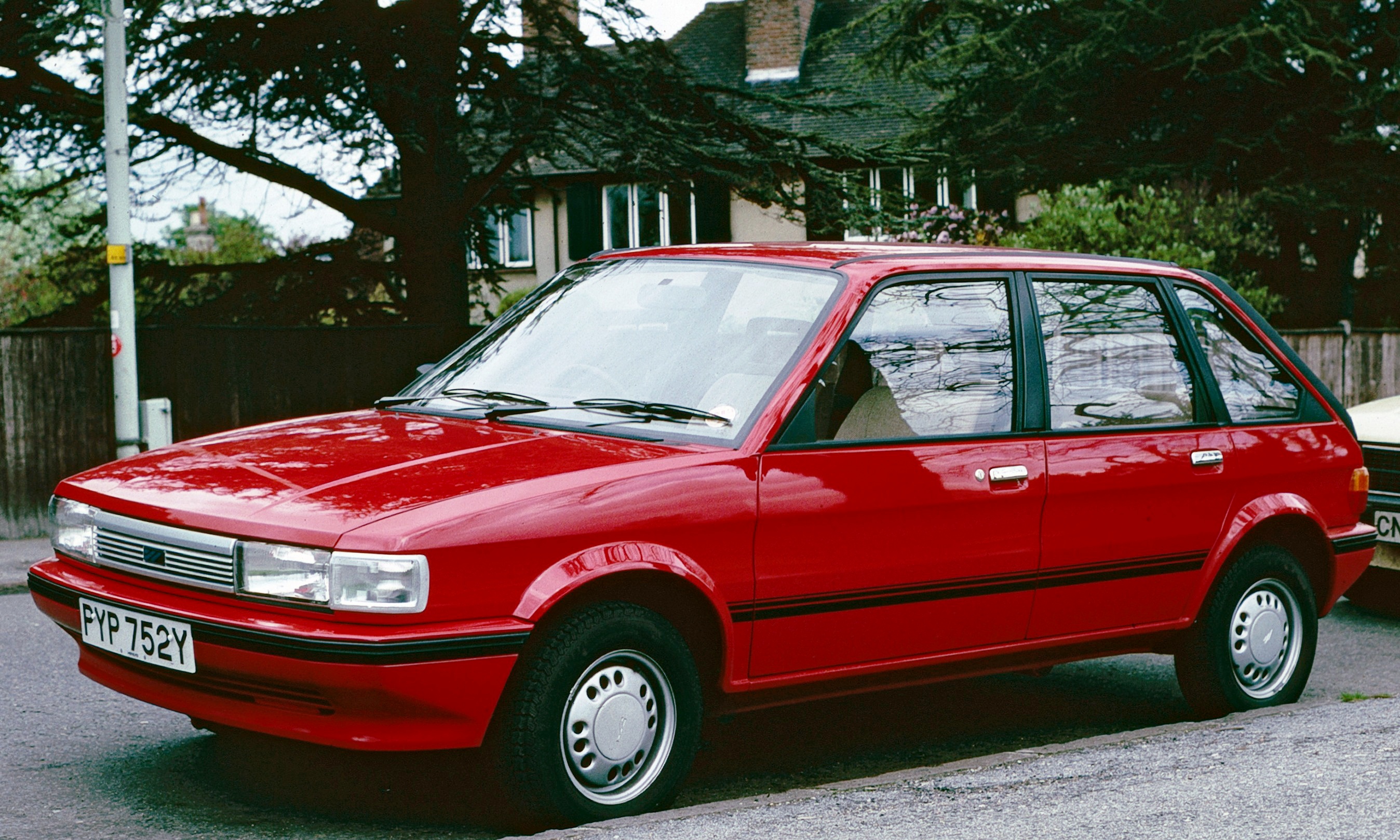
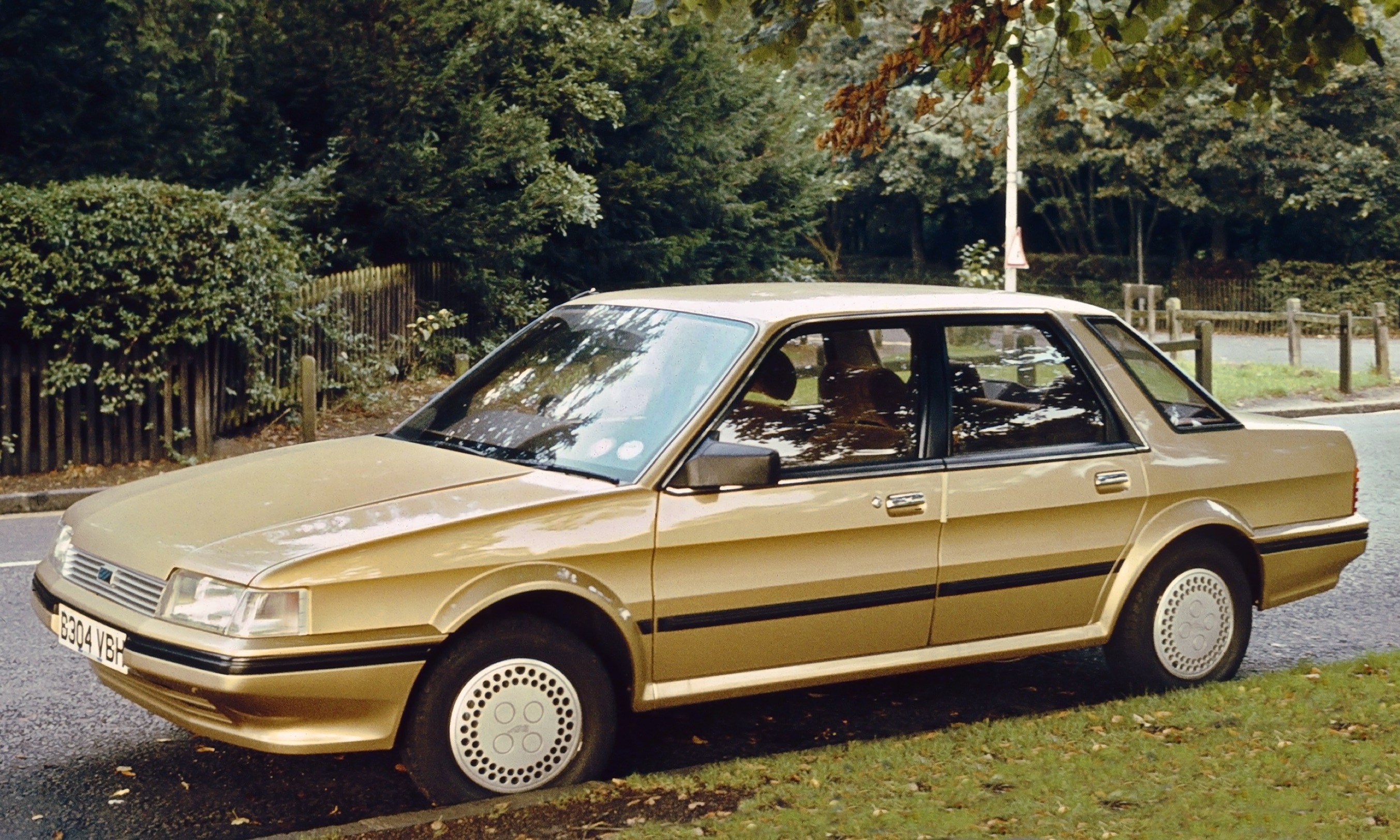 The
The
 Austin started his business in an abandoned print works at Longbridge, Birmingham. Due to its strategic advantages over
Austin started his business in an abandoned print works at Longbridge, Birmingham. Due to its strategic advantages over

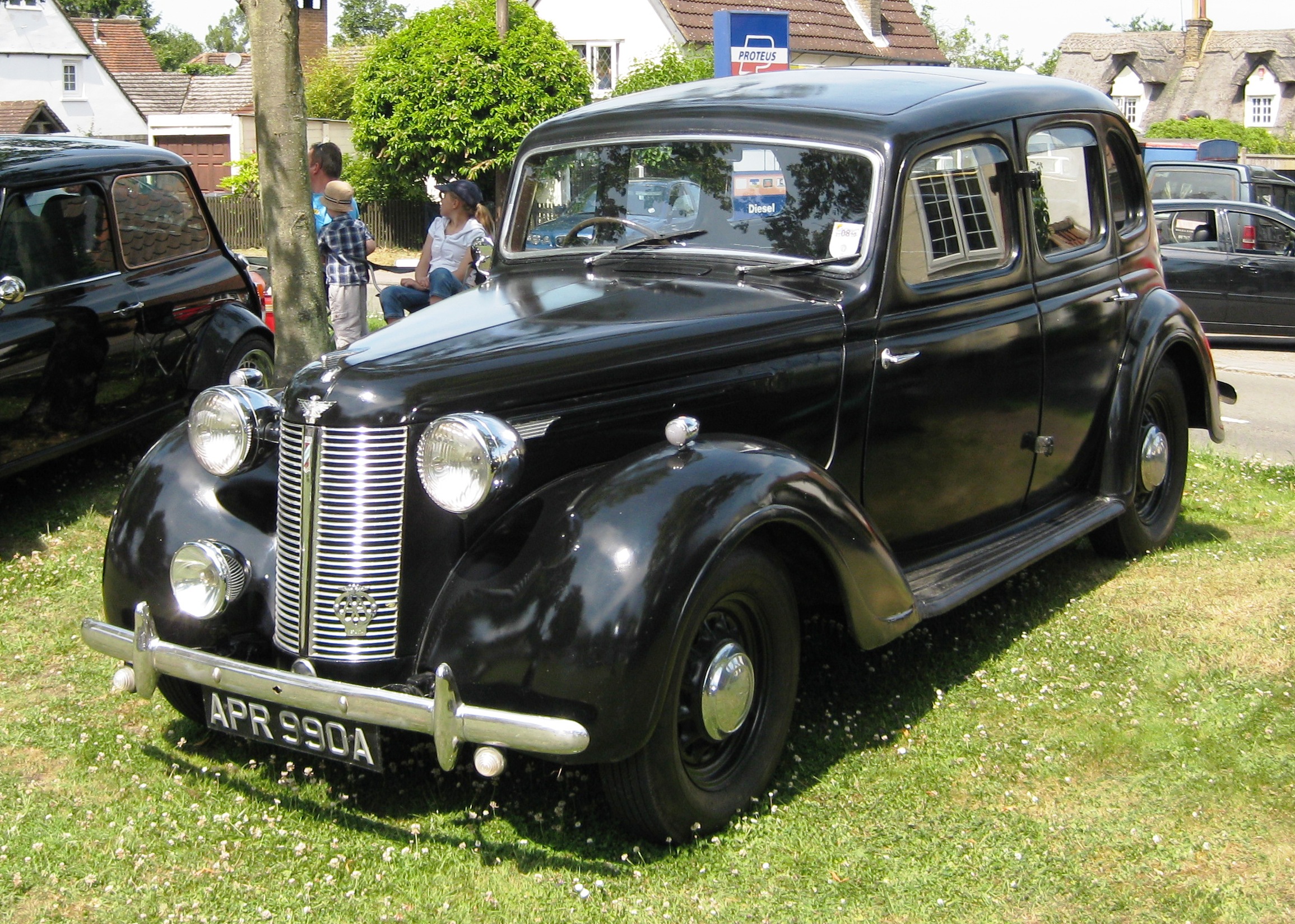
 * Small cars
** 1910–1911 Austin 7 hp
** 1922–1939
* Small cars
** 1910–1911 Austin 7 hp
** 1922–1939  *
* 
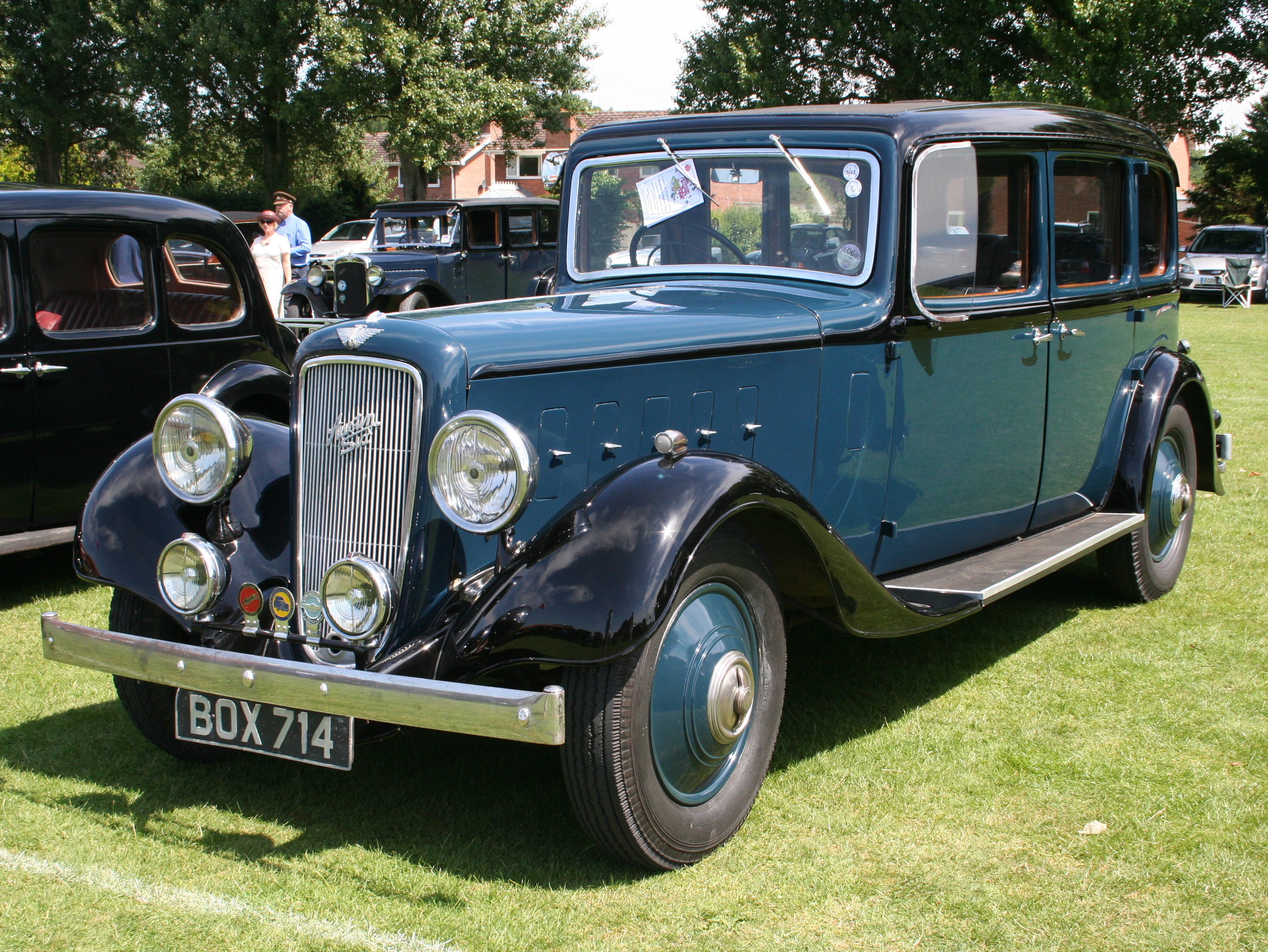

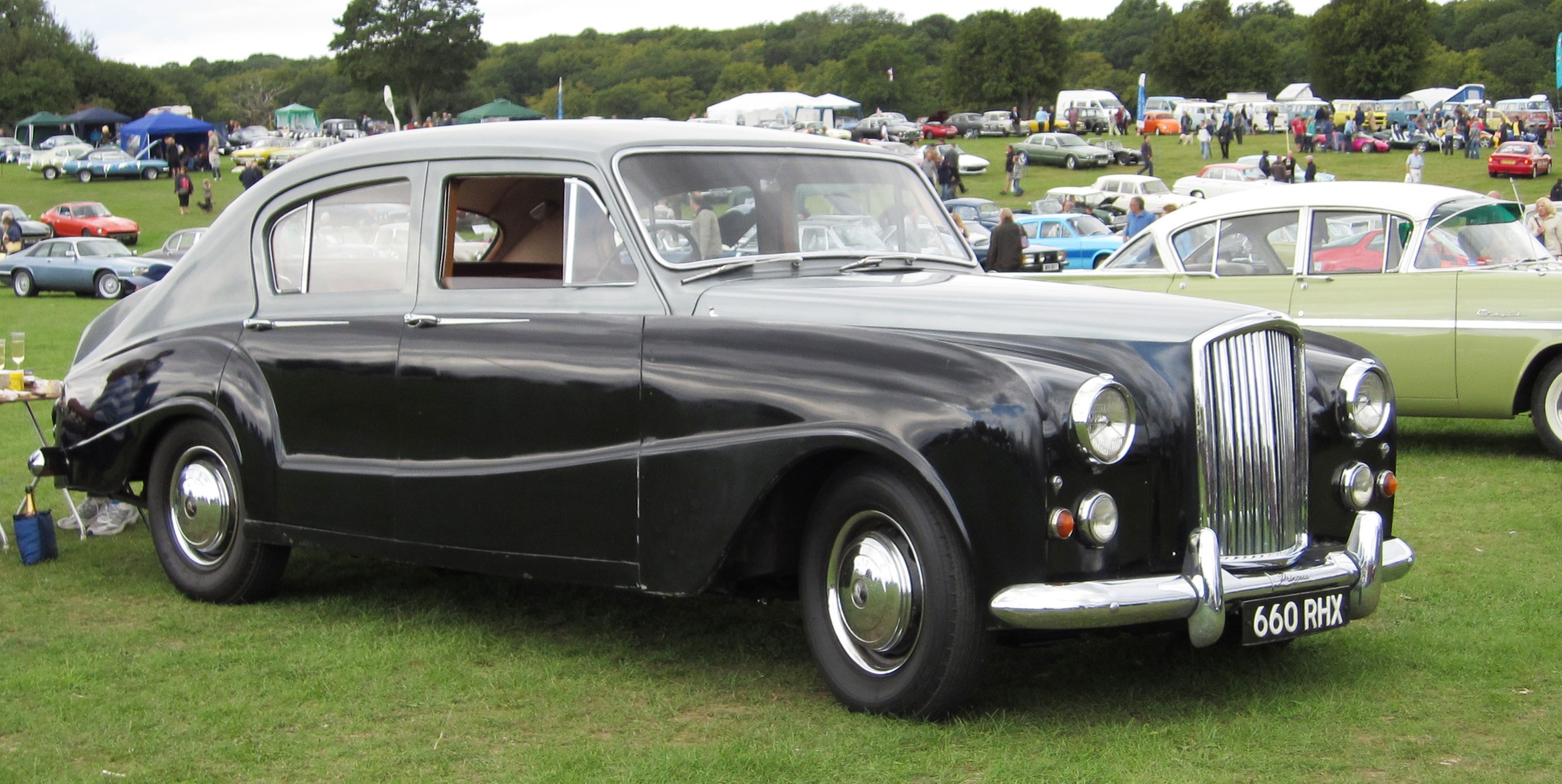 * Large Cars
** 1906–1907 Austin 25/30
** 1906–1907 Austin 15/20
** 1907–1913 Austin 18/24
** 1908–1913 Austin 40 hp
** 1908–1910 Austin 60 hp 6-cylinder
** 1910–1913
* Large Cars
** 1906–1907 Austin 25/30
** 1906–1907 Austin 15/20
** 1907–1913 Austin 18/24
** 1908–1913 Austin 40 hp
** 1908–1910 Austin 60 hp 6-cylinder
** 1910–1913


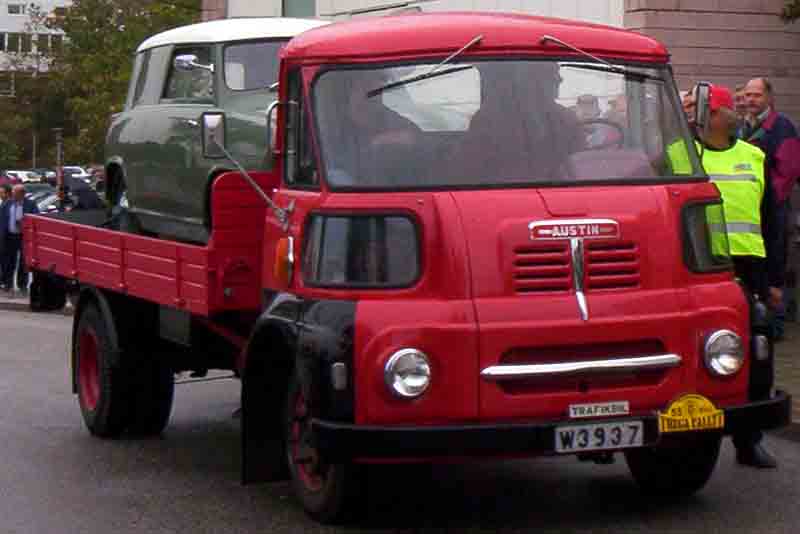
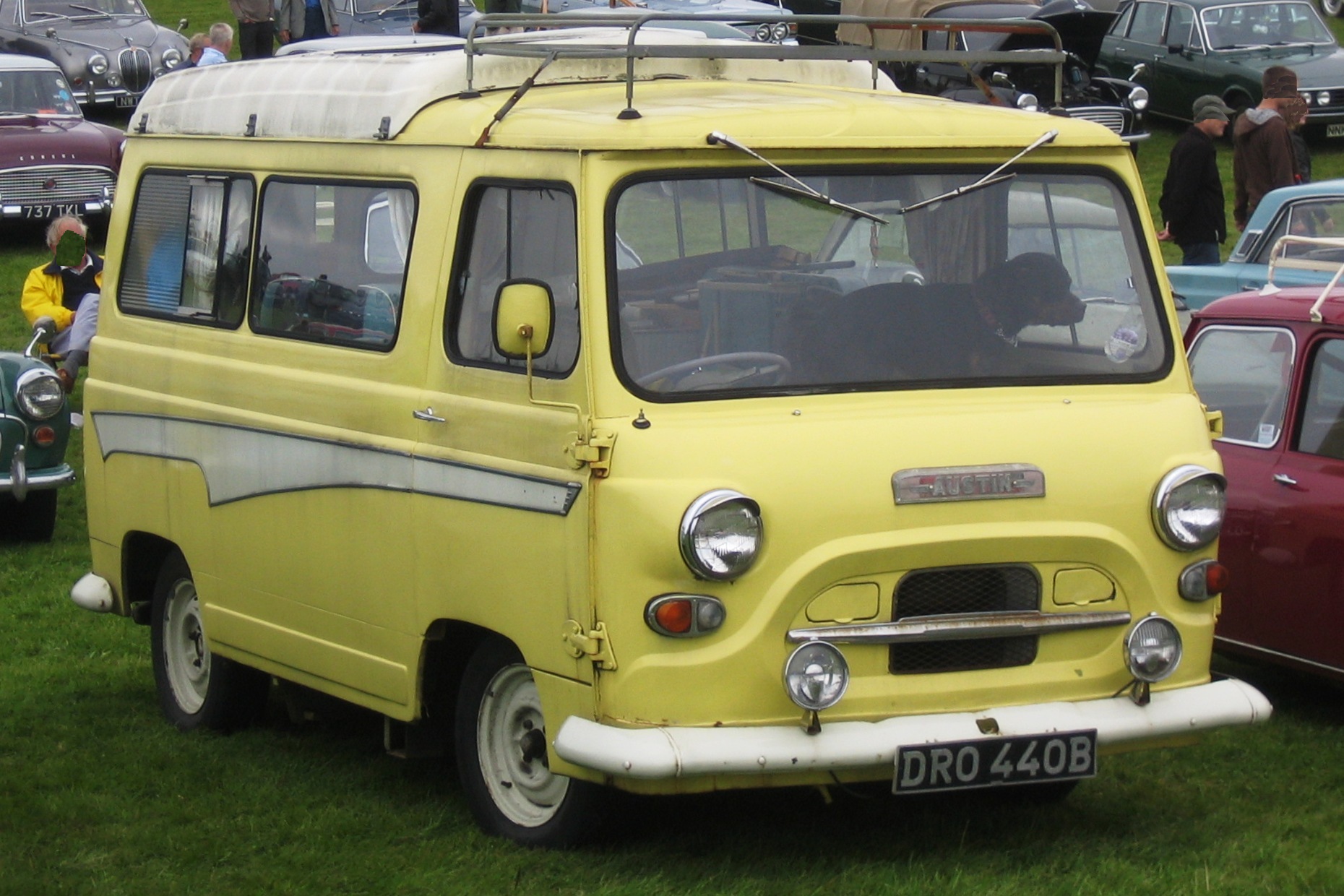 * Austin also made commercial vehicles, one of which was the FG, previously the Morris FG. The FG was the workhorse that kept Britain running in the 1960s. These Austin FGs and later the Leyland FGs all had petrol or diesel longstroke engines, producing good torque, but very little in the way of speed (40 mph was a good speed out of these vehicles). Leyland were to take over the FG, but before they did, in 1964, the
* Austin also made commercial vehicles, one of which was the FG, previously the Morris FG. The FG was the workhorse that kept Britain running in the 1960s. These Austin FGs and later the Leyland FGs all had petrol or diesel longstroke engines, producing good torque, but very little in the way of speed (40 mph was a good speed out of these vehicles). Leyland were to take over the FG, but before they did, in 1964, the
(British Broadcasting Corporation) commissioned six rolling chassis FGs to be coach-built by a Middlesex company, Palmer Coachbuilders. These six vehicles, registration 660 GYE to 666 GYE, were outdoor broadcast scenery vehicles.
motor vehicles
A motor vehicle, also known as motorized vehicle or automotive vehicle, is a self-propelled land vehicle, commonly wheeled, that does not operate on rails (such as trains or trams) and is used for the transportation of people or cargo.
The veh ...
, founded in 1905 by Herbert Austin
Herbert Austin, 1st Baron Austin (8 November 186623 May 1941) was an English automobile designer and builder who founded the Austin Motor Company. For the majority of his career he was known as Sir Herbert Austin, and the Northfield bypass ...
in Longbridge. In 1952 it was merged with Morris Motors Limited in the new holding company British Motor Corporation (BMC) Limited, keeping its separate identity. The marque Austin was used until 1987. The trademark is currently owned by the Chinese firm SAIC Motor, after being transferred from bankrupt subsidiary Nanjing Automotive which had acquired it with MG Rover Group
MG Rover Group was the last domestically owned mass-production car manufacturer in the British motor industry. The company was formed when BMW sold the car-making and engine manufacturing assets of the original Rover Group to the Phoenix Con ...
in July 2005.
History

1905–1918: Formation and development
While running the original Wolseley business, which had a highly cyclical sales pattern, Herbert Austin searched for products with a steady demand. Starting in 1895, he built three cars in his free time. They were among Britain's first cars. The third car, a four-wheeler, was completed in 1899. By 1901 his fellow directors could not see future profit in motor vehicles and so with their blessing and the backing of the Vickers brothers Austin started a separate car manufacturing business still using the name Wolseley.Roy Church, 'Austin, Herbert, Baron Austin (1866–1941)’, Oxford Dictionary of National Biography, Oxford University Press, 2004 In 1905 he fell out with Thomas and Albert Vickers over engine design. Leaving his creation, Wolseley, which he had made Britain's largest motor vehicle manufacturer, Austin obtained the backing of steel magnate Frank Kayser for his own enterprise. Kayser provided funds through mortgages and loans, debentures and guarantees to theMidland Bank
Midland Bank Plc was one of the Big Four banking groups in the United Kingdom for most of the 20th century. It is now part of HSBC. The bank was founded as the Birmingham and Midland Bank in Union Street, Birmingham, England in August 1836. It ...
thereby allowing Austin to keep virtually total ownership of his own business through his personal savings. Further assistance came from Dunlop patent holder Harvey du Cros. However, Austin's great rival, William Morris
William Morris (24 March 1834 – 3 October 1896) was a British textile designer, poet, artist, novelist, architectural conservationist, printer, translator and socialist activist associated with the British Arts and Crafts Movement. He ...
, was able to enter the industry proper (he first repaired cars) a little later funding his operation entirely from his own resources.
In November 1905 Herbert Austin acquired a disused printing works which was less than ten years old. It was located seven miles south-west of Birmingham
Birmingham ( ) is a City status in the United Kingdom, city and metropolitan borough in the metropolitan county of West Midlands (county), West Midlands in England. It is the second-largest city in the United Kingdom with a population of 1. ...
in the small village of Longbridge (then still within Worcestershire
Worcestershire ( , ; written abbreviation: Worcs) is a county in the West Midlands of England. The area that is now Worcestershire was absorbed into the unified Kingdom of England in 927, at which time it was constituted as a county (see H ...
). The following month The Austin Motor Company Limited was incorporated. In the last week of April 1906 a large body of motorists travelled to Longbridge "where snow lay full three inches deep on the ground and was still falling fast" to see the new Austin car, a conventional four-cylinder model with chain drive. It was available as a 15/20 hp complete at £500 (chassis, £425) and a 25/30 hp for £650 (chassis, £550). The sole concessionaire for sale of the cars was Mr Harvey Du Cros junior.
Two things were noticeable about Austin's new design. He had parted from the Vickers brothers because he had refused to use the then more conventional vertical engine in Wolseley cars. His new car had a vertical engine and, in all but minor detail, was identical to the English-built Clément-Gladiator
The Gladiator Cycle Company, Clément-Gladiator (from 1896), was a French manufacturer of bicycles, motorcycles and cars based in Le Pré-Saint-Gervais, Seine.
Throughout its productive life from 1891 until its demise in 1920 the company was va ...
s assembled in the same factory.

 A further injection of capital was needed in 1906 and William Harvey Du Cros (1846–1918) joined the board of directors. After that Harvey Du Cros junior of the Swift Cycle Co and Austin each held approximately half of the ordinary capital. Herbert Austin remained chairman and managing director.
A further injection of capital was needed in 1906 and William Harvey Du Cros (1846–1918) joined the board of directors. After that Harvey Du Cros junior of the Swift Cycle Co and Austin each held approximately half of the ordinary capital. Herbert Austin remained chairman and managing director.
 Austin's cars, like Wolseley's, were luxury vehicles. The published customer list included Russian Grand Dukes, Princesses, Bishops, high officials of the Spanish government and a long list of Britain's highest nobility.The Austin Motor Company (1914) Limited. ''The Times'', Monday, 9 February 1914; p. 13; Issue 40442.
SourcesSheepish start for the lion of Longbridge.
Lord Montagu of Beaulieu. ''The Times'', Saturday, 26 August 1995; pg. 3 1 Issue 65356.
Note: in 1912 Wolseley sold 3,000 cars.
In February 1914 Austin-manufactured bodies in tourer, limousine, landaulette and coupé styles could be provided with engines of 15, 20, 30 and 60 hp. RAC Rating Ambulances and commercial vehicles were also provided.
Austin became a public listed company in 1914 when the capital was increased to £650,000. At that time in number of cars produced it probably ranked fifth after Wolseley (still largest),
Austin's cars, like Wolseley's, were luxury vehicles. The published customer list included Russian Grand Dukes, Princesses, Bishops, high officials of the Spanish government and a long list of Britain's highest nobility.The Austin Motor Company (1914) Limited. ''The Times'', Monday, 9 February 1914; p. 13; Issue 40442.
SourcesSheepish start for the lion of Longbridge.
Lord Montagu of Beaulieu. ''The Times'', Saturday, 26 August 1995; pg. 3 1 Issue 65356.
Note: in 1912 Wolseley sold 3,000 cars.
In February 1914 Austin-manufactured bodies in tourer, limousine, landaulette and coupé styles could be provided with engines of 15, 20, 30 and 60 hp. RAC Rating Ambulances and commercial vehicles were also provided.
Austin became a public listed company in 1914 when the capital was increased to £650,000. At that time in number of cars produced it probably ranked fifth after Wolseley (still largest), Humber
The Humber is a large tidal estuary on the east coast of Northern England. It is formed at Trent Falls, Faxfleet, by the confluence of the tidal rivers Ouse and Trent. From there to the North Sea, it forms part of the boundary between t ...
, Sunbeam and Rover
Rover may refer to:
People
* Constance Rover (1910–2005), English historian
* Jolanda de Rover (born 1963), Dutch swimmer
* Rover Thomas (c. 1920–1998), Indigenous Australian artist
Places
* Rover, Arkansas, US
* Rover, Missouri, US
...
.
The Austin Motor Co. grew enormously during the First World War fulfilling government contracts for aircraft, shells, heavy guns and generating sets and 1,600 three-ton trucks most of which were sent to Russia. The workforce expanded from around 2,500 to 22,000.
1919–1939: Interwar success

 After the war Herbert Austin decided on a one-model policy based on the 3620 cc 20 hp engine. Versions included cars, commercials and even a tractor, but sales volumes were never enough to fill the vast factory built during wartime. The company went into
After the war Herbert Austin decided on a one-model policy based on the 3620 cc 20 hp engine. Versions included cars, commercials and even a tractor, but sales volumes were never enough to fill the vast factory built during wartime. The company went into receivership
In law, receivership is a situation in which an institution or enterprise is held by a receiver—a person "placed in the custodial responsibility for the property of others, including tangible and intangible assets and rights"—especially in c ...
in 1921 but rose again after financial restructuring. Though Herbert Austin remained chairman he was no longer managing director and from that time decisions were made by committee.
Critical to the recovery was the appointment in 1922 of a new finance director, Ernest Payton with the backing of the Midland Bank, and a new works director in charge of car production, Carl Engelbach, at the insistence of the creditors' committee. This triumvirate of Austin, Payton and Engelbach steered the company's fortunes through the interwar years.
In a quest to expand market share, smaller cars were introduced, the 1661 cc ''Twelve'' in 1922 and, later the same year, the ''Seven'', an inexpensive, simple small car and one of the earliest to be directed at a mass market. One of the reasons for a market demand for a cars like the Austin 7 was the British tax code
A tax is a compulsory financial charge or some other type of levy imposed on a taxpayer (an individual or legal entity) by a governmental organization in order to fund government spending and various public expenditures (regional, local, or n ...
. In 1930 every personal car was taxed by its engine size, which in American dollars was $2.55 per cubic inch of piston displacement. As an example, the owner of an Austin 7 in England, which sold for approximately $455, would have to pay a yearly engine tax of $39. In comparison, the owner in England of a Ford Model-A would have to pay $120 per year in an engine tax. And this system of engine displacement tax was common in other European nations as well in the 1930s. At one point, the "Baby Austin" was built under licence by the fledgling BMW of Germany (as the Dixi); by the Japanese manufacturer Datsun
Datsun (, ) was an automobile brand owned by Nissan. Datsun's original production run began in 1931. From 1958 to 1986, only vehicles exported by Nissan were identified as Datsun. Nissan phased out the Datsun brand in March 1986, but relaunche ...
; as the Bantam in the United States; and as the Rosengart in France. In England the Austin was the most produced car in 1930
The American Austin Car Company struggled to sell tiny Austin cars in the US market. It operated as a largely independent subsidiary from 1929 to 1934 was revived after bankruptcy under the name "American Bantam
The American Bantam Car Company was an American automobile manufacturing company incorporated in the state of Pennsylvania. American Bantam is credited with the invention of the Original Jeep in 1940. The company's founders, Roy Evans and Willia ...
" from 1937 to 1941. They became best known as the first company to submit the Bantam Reconnaissance Car working prototype, saving time by using Austin nose and fender parts of what would evolve into the extremely successful and iconic WWII Willys MB "Jeep". The design was unfortunately handed over to Willys and Ford for production with a revised nose and fender design, while Bantam would largely just build trailers during the war.
 With the help of the ''Seven'', Austin weathered the worst of the depression and remained profitable through the 1930s, producing a wider range of cars which was steadily updated by the introduction of all-steel bodies, Girling brakes, and synchromesh gearboxes. However, all the engines retained the same
With the help of the ''Seven'', Austin weathered the worst of the depression and remained profitable through the 1930s, producing a wider range of cars which was steadily updated by the introduction of all-steel bodies, Girling brakes, and synchromesh gearboxes. However, all the engines retained the same side-valve
A flathead engine, also known as a sidevalve engine''American Rodder'', 6/94, pp.45 & 93. or valve-in-block engine is an internal combustion engine with its poppet valves contained within the engine block, instead of in the cylinder head, as ...
configuration. Deputy chairman Ernest Payton became chairman in 1941 on the death of Lord Austin. In 1938 Leonard Lord
Leonard Percy Lord, 1st Baron Lambury KBE (15 November 1896 – 13 September 1967) was a captain of the British motor industry.
Background and education
Leonard Percy Lord was born on 16 November 1896 and was the youngest child in his family ...
joined the company board and became chairman in 1946 on the death of Ernest Payton.


Nissan
In 1932,Datsun
Datsun (, ) was an automobile brand owned by Nissan. Datsun's original production run began in 1931. From 1958 to 1986, only vehicles exported by Nissan were identified as Datsun. Nissan phased out the Datsun brand in March 1986, but relaunche ...
(An automobile manufacturer under the Nissan Concern ''zaibatsu
is a Japanese term referring to industrial and financial vertically integrated business conglomerates in the Empire of Japan, whose influence and size allowed control over significant parts of the Japanese economy from the Meiji period unt ...
'') built cars infringing Austin patents. From 1934, Datsun began to build Sevens under licence and this operation became the greatest success of Austin's overseas licensing of its Seven. It marked the beginning of Datsun's international success.
In 1952, Austin entered into another agreement with Datsun for assembly of 2,000 imported Austins from "knock-down kits", to be sold in Japan under the Austin trademark. The agreement called for Nissan to make all Austin parts locally within three years, a goal Nissan met. Nissan produced and marketed Austins for seven years. The agreement also gave Nissan rights to use Austin patents, which Nissan used in developing its own engines for its Datsun line of cars. In 1953, British-built Austins were assembled and sold, but by 1955, the Austin A50 – completely assembled by Nissan and featuring a slightly larger body with 1489 cc engine – was on the market in Japan. Nissan produced 20,855 Austins between 1953 and 1959.Cusumano, pp. 90–92
1939–1958: War years and post-war years

 During
During the Second World War
World War II or the Second World War, often abbreviated as WWII or WW2, was a world war that lasted from 1939 to 1945. It involved the vast majority of the world's countries—including all of the great powers—forming two opposing ...
Austin continued building cars but also made trucks and aircraft, including Short Stirling and Avro Lancaster bombers.
The post-war car range was announced in 1944, and production started in 1945. The immediate post-war range was mainly similar to that of the late 1930s but did include the 16 hp, significant for having the company's first overhead valve
An overhead valve (OHV) engine, sometimes called a ''pushrod engine'', is a piston engine whose valves are located in the cylinder head above the combustion chamber. This contrasts with earlier flathead engines, where the valves were located b ...
engine.
Austin of England
From late 1950 to mid-1952 products, brochures and advertisements displayed in flowing script ''Austin of England'' as if in response to Morris'Nuffield Organization
Nuffield Organization was the unincorporated umbrella-name or promotional name used for the charitable and commercial interests of owner and donor, William Morris, 1st Viscount Nuffield. The name was assumed following Nuffield's gift made to form ...
. It fell out of use with the financial merger with Morris in BMC.
BMC
In 1952, The Austin Motor Company Limited merged ownership, but not identity, with long-term rival Morris Motors Limited, becoming The British Motor Corporation Limited, withLeonard Lord
Leonard Percy Lord, 1st Baron Lambury KBE (15 November 1896 – 13 September 1967) was a captain of the British motor industry.
Background and education
Leonard Percy Lord was born on 16 November 1896 and was the youngest child in his family ...
in charge. William Morris
William Morris (24 March 1834 – 3 October 1896) was a British textile designer, poet, artist, novelist, architectural conservationist, printer, translator and socialist activist associated with the British Arts and Crafts Movement. He ...
was first chairman but soon retired. Lord, who had stormed out of Morris declaring he would "take Cowley apart brick by brick", ensured Austin was the dominant partner and its (more recently designed OHV) engines were adopted for most of the cars. Various models followed the Morris policy and became badge-engineered versions of each other.

Austin-Healey
Also in 1952, Austin did a deal withDonald Healey
Donald Mitchell Healey CBE (3 July 1898 – 15 January 1988) was a noted English car designer, rally driver and speed record holder.
Early life
Born in Perranporth, Cornwall, elder son of Frederick (John Frederick) and Emma Healey (née Mit ...
, leading to a new marque, Austin-Healey
Austin-Healey was a British sports car maker established in 1952 through a joint venture between the Austin division of the British Motor Corporation (BMC) and the Donald Healey Motor Company (Healey), a renowned automotive engineering and des ...
, and a range of sports cars.
1959–1969: Era of revolution
Alec Issigonis
Sir Alexander Arnold Constantine Issigonis (18 November 1906 – 2 October 1988) was a British-Greek automotive designer. He designed the Mini, launched by the British Motor Corporation in 1959, and voted the second most influential car of t ...
, who had been with Morris from 1936 to 1952, to design a small car; the result was the revolutionary Mini
The Mini is a small, two-door, four-seat car, developed as ADO15, and produced by the British Motor Corporation (BMC) and its successors, from 1959 through 2000. Minus a brief hiatus, original Minis were built for four decades and sold during ...
, launched in 1959. The Austin version was initially called the Austin Seven, but Morris' Mini Minor name caught the public imagination and the Morris version outsold its Austin twin, so the Austin's name was changed to Mini to follow suit. In 1970, British Leyland
British Leyland was an automotive engineering and manufacturing conglomerate formed in the United Kingdom in 1968 as British Leyland Motor Corporation Ltd (BLMC), following the merger of Leyland Motors and British Motor Holdings. It was partl ...
dropped the separate Austin and Morris branding of the Mini, and it was subsequently simply "Mini", under the Austin Morris division of BLMC.
The principle of a transverse engine with gearbox in the sump and driving the front wheels was applied to larger cars, beginning with the 1100
Year 1100 ( MC) was a leap year starting on Sunday (link will display the full calendar) of the Julian calendar, the 1100th year of the Common Era (CE) and ''Anno Domini'' (AD) designations, the 100th year of the 2nd millennium, the 100th and ...
of 1963, (although the Morris-badged version was launched 13 months earlier than the Austin, in August 1962), the 1800
As of March 1 ( O.S. February 18), when the Julian calendar acknowledged a leap day and the Gregorian calendar did not, the Julian calendar fell one day further behind, bringing the difference to 12 days until February 28 ( O.S. February 16 ...
of 1964 and the Maxi of 1969. This meant that BMC had spent 10 years developing a new range of front-drive, transverse-engined models, while most competitors had only just started to make such changes.
The big exception to this was the Austin 3-litre
The Austin 3-Litre is a British saloon car that was introduced by Austin at the London Motor Show in 1967. Codenamed ADO61, the car was intended to be BMC's offering in the 3-litre executive class and was originally designed in the early 1960s, ...
. Launched in 1968, it was a rear-wheel drive large car, but it shared the central section of the 1800. It was a sales disaster, with fewer than 10,000 examples being made.
BMC was the first British manufacturer to move into front-wheel drive so comprehensively. Ford
Ford commonly refers to:
* Ford Motor Company, an automobile manufacturer founded by Henry Ford
* Ford (crossing), a shallow crossing on a river
Ford may also refer to:
Ford Motor Company
* Henry Ford, founder of the Ford Motor Company
* Ford F ...
did not launch its first front-drive model until 1976 (in Britain), Ford-Germany in 1962 with the Taunus 12M(P4), while Vauxhall's first front-drive model was launched in 1979 and Chrysler UK's first such car was launched in 1975. Front-wheel drive was popular elsewhere in Europe, however, with Renault
Groupe Renault ( , , , also known as the Renault Group in English; legally Renault S.A.) is a French multinational automobile manufacturer established in 1899. The company produces a range of cars and vans, and in the past has manufacture ...
, Citroen and Simca
Simca (; Mechanical and Automotive Body Manufacturing Company) was a French automaker, founded in November 1934 by Fiat S.p.A. and directed from July 1935 to May 1963 by Italian Henri Pigozzi. Simca was affiliated with Fiat and, after Simca bough ...
all using the system at the same time or before BMC. East Germany's Trabant
Trabant () is a series of small cars produced from 1957 until 1991 by former East German car manufacturer VEB Sachsenring Automobilwerke Zwickau. In total, four different models were made, the Trabant 500, Trabant 600, Trabant 601, and the Tr ...
used the system from 1958.
In September 1965 BMC completed the purchase of its major supplier, Pressed Steel
''Pressed'' is a 2011 Canadian crime drama film directed by Justin Donnelly and starring Luke Goss, Tyler Johnston, Jeffrey Ballard, and Michael Eklund. It is the debut directing project for Justin Donnelly.
Plot
Business executive Brian Parker ...
. Twelve months later it completed the purchase of Jaguar and in December 1966 changed its name from BMC to BMH, British Motor Holdings Limited. In early 1968 under government pressure BMH merged with Leyland Motors Limited and Austin became a part of the large British Leyland Motor Corporation (BLMC) combine.
1970–1979: Era of turbulence
British Leyland
British Leyland was an automotive engineering and manufacturing conglomerate formed in the United Kingdom in 1968 as British Leyland Motor Corporation Ltd (BLMC), following the merger of Leyland Motors and British Motor Holdings. It was partl ...
combine. One of Austin's main models of this era was the 1973 Allegro, successor to the 1100/1300 ranges, which was criticised for its bulbous styling which earned it the nickname "Flying pig" as well as the doubtful build quality and indifferent reliability. It was still a strong seller in Britain, although not quite as successful as its predecessor.
The wedge-shaped 18/22 series was launched as an Austin, a Morris and a more upmarket Wolseley in 1975. But within six months, it was rechristened the Princess and wore none of the previous marque badges, becoming a marque in its own right, under the Austin Morris division of British Leyland that had been virtually nationalised in 1975.
It was upgraded at the end of 1981 to become the Austin Ambassador
The Austin Ambassador is a large family car that was introduced by the Austin Rover Group subsidiary of British Leyland in March 1982. The vehicle was a heavily updated version of the Princess, a saloon car that had lacked a hatchback. Only the ...
(and gaining a hatchback) but by that time there was little that could be done to disguise the age of the design, and it was too late to make much of an impact on sales.
By the end of the 1970s, the future of Austin and the rest of British Leyland (now known as BL) was looking bleak.
1980–1989: Austin Rover era

 The
The Austin Metro
The Metro is a supermini car, later a city car that was produced by British Leyland (BL) and, later, the Rover Group from 1980 to 1998. It was launched in 1980 as the Austin mini Metro. It was intended to complement and eventually replace the ...
, launched in October 1980, was heralded as the saviour of Austin Motor Company and the whole BL combine. Twenty-one years after the launch of the Mini, it gave BL a much-needed modern supermini to compete with the recently launched likes of the Ford Fiesta, Vauxhall Nova
The Opel Corsa is a supermini car engineered and produced by the German automobile manufacturer Opel since 1982. Throughout its existence, it has been sold under a variety of other brands owned by General Motors (most notably Vauxhall, Chevrolet ...
, VW Polo
The Volkswagen Polo is a supermini car (B-segment) produced by the German car manufacturer Volkswagen since 1975. It is sold in Europe and other markets worldwide in hatchback, saloon, and estate variants throughout its production run.
History
...
and Renault 5. It was an instant hit with buyers and was one of the most popular British cars of the 1980s. It was intended as a replacement for the Mini but, in fact, the Mini actually went on to outlast the Metro. It was facelifted in October 1984 and gained a 5-door version.
In 1982, most of the car division of the by now somewhat shrunken British Leyland (BL) company was rebranded as the Austin Rover Group, with Austin acting as the "budget" and mainstream brand to Rover's more luxurious models. The MG badge was revived for sporty versions of the Austin models, of which the MG Metro 1300 was the first. The Morris and Triumph brands were axed in 1984.
Austin revitalised its entry into the small family-car market in March 1983 with the launch of its all-new Maestro
Maestro (; from the Italian '' maestro'' , meaning "master" or "teacher") is an honorific title of respect (plural: maestros or maestri). The term is most commonly used in the context of Western classical music and opera, in line with the ubiqu ...
, a spacious five-door hatchback that replaced the elderly Allegro and Maxi and was popular in the early years of its production life, although sales had started to dip dramatically by the end of the decade.
April 1984 saw the introduction of the Maestro-derived Montego saloon, successor to the Morris Ital
The Morris Ital is a medium-sized car that was built by British Leyland (BL) from 1980 to 1984. A successor to the Morris Marina, it was available in a variety of bodystyles.
Design and launch
The Ital was given the design code ADO73 F/L (beca ...
. The new car received praise for its interior space and comfort as well as its handling, but early build-quality problems took time to overcome. The spacious estate version, launched six months later, was one of the most popular load carriers in Britain for several years after its launch.
In 1986, Austin Rover's holding company BL plc became Rover Group plc and was privatised
Privatization (also privatisation in British English) can mean several different things, most commonly referring to moving something from the public sector into the private sector. It is also sometimes used as a synonym for deregulation when ...
by selling it to British Aerospace
British Aerospace plc (BAe) was a British aircraft, munitions and defence-systems manufacturer. Its head office was at Warwick House in the Farnborough Aerospace Centre in Farnborough, Hampshire. Formed in 1977, in 1999 it purchased Marcon ...
(BAe) in 1988.
Plans to replace the Metro with a radical new model, based on the ECV3 research vehicle and aiming for 100 mpg, led to the Austin AR6 of 1984–86, with several prototypes tested and production expected to start before the end of the decade. The desire to lose the Austin name and take Rover "upmarket" led to this project's demise in early 1987.
In 1988, the Austin badge was phased out and Austin Rover became the Rover Group from the following year. The Austin cars continued to be manufactured, although they ceased to be Austins. They became "marque-less" in their home market with bonnet badges the same shape as the Rover longship badge but without "Rover" written on them. Instead any badging just showed the model of the car: a Montego of this era, for instance, would have a grille badge simply saying "Montego", while the rear badges just said "Montego" and the engine size/trim level. A revamped Metro was launched in May 1990 and got the new K-series engine. It then became the Rover Metro.
Despite sales of both the Maestro and Montego being in decline by 1990, these ranges continued in production until 1994 and never wore a Rover badge on their bonnets in Britain. They were, however, sometimes referred to as "Rovers" in the press and elsewhere. Their place in the Rover range was gradually filled by a new generation of Rover models.
Possible revival
The rights to the Austin name passed toBritish Aerospace
British Aerospace plc (BAe) was a British aircraft, munitions and defence-systems manufacturer. Its head office was at Warwick House in the Farnborough Aerospace Centre in Farnborough, Hampshire. Formed in 1977, in 1999 it purchased Marcon ...
and then to BMW when each bought the Rover Group. The rights were subsequently sold to MG Rover
MG Rover Group was the last domestically owned mass-production car manufacturer in the British motor industry. The company was formed when BMW sold the car-making and engine manufacturing assets of the original Rover Group to the Phoenix Cons ...
, created when BMW sold the business. Following MG Rover's collapse and sale, Nanjing Automobile Group owns the Austin name and Austin's historic assembly plant in Longbridge. At the Nanjing International Exhibition in May 2006, Nanjing announced it might use the Austin name on some of the revived MG Rover models, at least in the Chinese market. However, Nanjing is for the moment concentrating on reviving the MG brand. The MG brand is traditionally used for sports cars and Nanjing has no rights to the Rover name, so a revival of the Austin name would seem a logical brand for selling more standard cars. It might also be argued that a British name would be more respected in the European market than a Chinese name. Nanjing Automobile Group itself merged into SAIC Motor.
More than a decade on the Austin name now belongs to the British Engineer John Stubbs, owner of specialist suspension company Black Art Designs. Stubbs aims to take the Austin name back into the mainstream market, possibly with an electric vehicle.
Plant
 Austin started his business in an abandoned print works at Longbridge, Birmingham. Due to its strategic advantages over
Austin started his business in an abandoned print works at Longbridge, Birmingham. Due to its strategic advantages over Morris
Morris may refer to:
Places
Australia
*St Morris, South Australia, place in South Australia
Canada
* Morris Township, Ontario, now part of the municipality of Morris-Turnberry
* Rural Municipality of Morris, Manitoba
** Morris, Manitob ...
's Cowley plant, Longbridge became British Leyland
British Leyland was an automotive engineering and manufacturing conglomerate formed in the United Kingdom in 1968 as British Leyland Motor Corporation Ltd (BLMC), following the merger of Leyland Motors and British Motor Holdings. It was partl ...
's main factory in the early 1970s. Following the Austin marque's discontinuance in 1987, Rover
Rover may refer to:
People
* Constance Rover (1910–2005), English historian
* Jolanda de Rover (born 1963), Dutch swimmer
* Rover Thomas (c. 1920–1998), Indigenous Australian artist
Places
* Rover, Arkansas, US
* Rover, Missouri, US
...
and MG continued to use the plant. The collapse of MG Rover
MG Rover Group was the last domestically owned mass-production car manufacturer in the British motor industry. The company was formed when BMW sold the car-making and engine manufacturing assets of the original Rover Group to the Phoenix Cons ...
meant it was not used from 2005 until MG production restarted in 2008.
Models
Cars

 * Small cars
** 1910–1911 Austin 7 hp
** 1922–1939
* Small cars
** 1910–1911 Austin 7 hp
** 1922–1939 Austin 7
The Austin 7 is an economy car that was produced from 1923 until 1939 in the United Kingdom by Austin. It was nicknamed the "Baby Austin" and was at that time one of the most popular cars produced for the British market and sold well abroad. ...
** 1959–1961 Seven, as BMC
** 1961–1969 Mini
The Mini is a small, two-door, four-seat car, developed as ADO15, and produced by the British Motor Corporation (BMC) and its successors, from 1959 through 2000. Minus a brief hiatus, original Minis were built for four decades and sold during ...
, as BMC
** 1980–1990 Metro
Metro, short for metropolitan, may refer to:
Geography
* Metro (city), a city in Indonesia
* A metropolitan area, the populated region including and surrounding an urban center
Public transport
* Rapid transit, a passenger railway in an urb ...
, as Austin Rover
* Small family cars
** 1911–1915 Austin 10 hp
** 1932–1947 Austin 10
The Austin Ten is a small car that was produced by Austin. It was launched on 19 April 1932 and was Austin's best-selling car in the 1930s and continued in production, with upgrades, until 1947. It fitted in between their "baby" Austin Seven w ...
** 1939–1947 Austin 8
** 1951–1956 A30
** 1956–1959 A35
** 1956–1962 A35 Countryman
** 1954–1961 Nash Metropolitan
The Nash Metropolitan is an American automobile that was assembled in England and marketed from 1953 until 1961.
It conforms to two classes of vehicle: economy car and subcompact car. In today's US terminology the Metropolitan is a “subcompac ...
/ Austin Metropolitan
** 1958–1961 A40 Farina Mk I
** 1961–1967 A40 Farina Mk II
** 1963–1974 1100
Year 1100 ( MC) was a leap year starting on Sunday (link will display the full calendar) of the Julian calendar, the 1100th year of the Common Era (CE) and ''Anno Domini'' (AD) designations, the 100th year of the 2nd millennium, the 100th and ...
** 1967–1974 1300
** 1973–1983 Allegro
 *
* Large family cars
A family car is a car classification used in Europe to describe normally-sized cars. The name comes from the marketed use of these cars to carry a whole family locally or on vacations. Most family cars are hatchbacks or sedans, although there are ...
** 1913–1914 Austin 15 hp
** 1922–1940 Austin "Heavy" 12
** 1927–1938 Austin 16
The Austin Sixteen Light Six is a British car that was made by Austin from 1927. Announced in October 1927, the first deliveries were planned for March 1928.Austin, ''The Times'', Tuesday, Oct 18, 1927; pg. 10; Issue 44715.
To distinguish th ...
(16/18)
** 1931–1936 Austin "Light" 12/6
** 1933–1939 Austin "Light" 12/4
** 1937–1939 Austin 14
** 1938–1939 Austin 18
** 1939–1947 Austin 12
** 1945–1949 Austin 16 hp
** 1947–1952 A40 Devon/Dorset
** 1948–1950 A70 Hampshire
** 1950–1954 A70 Hereford
** 1952–1954 A40 Somerset
** 1954–1958 A40/A50/A55 Cambridge
** 1954–1959 A90/A95/A105 Westminster
** 1959–1961 A55 Cambridge
** 1959–1961 A99 Westminster
** 1961–1969 A60 Cambridge
** 1961–1968 A110 Westminster
** 1964–1975 1800/2200 (ADO17)
** 1967–1971 3-Litre
** 1969–1981 Maxi
** 1975–1975 1800/2200 (ADO71)
** 1982–1984 Ambassador
** 1983–1994 Maestro
Maestro (; from the Italian '' maestro'' , meaning "master" or "teacher") is an honorific title of respect (plural: maestros or maestri). The term is most commonly used in the context of Western classical music and opera, in line with the ubiqu ...
** 1984–1994 Montego



 * Large Cars
** 1906–1907 Austin 25/30
** 1906–1907 Austin 15/20
** 1907–1913 Austin 18/24
** 1908–1913 Austin 40 hp
** 1908–1910 Austin 60 hp 6-cylinder
** 1910–1913
* Large Cars
** 1906–1907 Austin 25/30
** 1906–1907 Austin 15/20
** 1907–1913 Austin 18/24
** 1908–1913 Austin 40 hp
** 1908–1910 Austin 60 hp 6-cylinder
** 1910–1913 Austin 50 hp
Austin is the capital city of the U.S. state of Texas, as well as the seat and largest city of Travis County, with portions extending into Hays and Williamson counties. Incorporated on December 27, 1839, it is the 11th-most-populous city ...
6-cylinder
** 1912–1918 Austin 20 hp
** 1914–1916 Austin 30 hp
** 1919–1938 Austin Twenty
** 1938–1939 Austin Twenty Eight (28/6)
** 1947–1954 A110/A125 Sheerline
** 1946–1956 A120 Princess
** 1947–1956 A135 Princess
** 1956–1959 Princess IV
* Limousine
A limousine ( or ), or limo () for short, is a large, chauffeur-driven luxury vehicle with a partition between the driver compartment and the passenger compartment.
A very long wheelbase luxury sedan (with more than four doors) driven by a pr ...
s and Landaulette
A landaulet, also known as a landaulette, is a car body style where the rear passengers are covered by a convertible top. Often the driver is separated from the rear passengers by a division, as with a limousine.
During the first half of the 20 ...
s
** 1906–1907 Austin 25/30
** 1906–1907 Austin 15/20
** 1907–1913 Austin 18/24
** 1908–1913 Austin 40 hp
** 1908–1910 Austin 60 hp 6-cylinder
** 1910–1913 Austin 50 hp
Austin is the capital city of the U.S. state of Texas, as well as the seat and largest city of Travis County, with portions extending into Hays and Williamson counties. Incorporated on December 27, 1839, it is the 11th-most-populous city ...
6-cylinder
** 1912–1918 Austin 20 hp
** 1914–1916 Austin 30 hp
** 1919–1938 Austin Twenty
** 1927–1938 Austin 16
The Austin Sixteen Light Six is a British car that was made by Austin from 1927. Announced in October 1927, the first deliveries were planned for March 1928.Austin, ''The Times'', Tuesday, Oct 18, 1927; pg. 10; Issue 44715.
To distinguish th ...
(16/18)
** 1938–1939 Austin 18
** 1938–1939 Austin Twenty Eight
** 1947–1954 A110/A125 Sheerline
** 1946–1956 A120 Princess
** 1947–1956 A135 Princess
** 1956–1959 Princess IV
* Sports car
A sports car is a car designed with an emphasis on dynamic performance, such as handling, acceleration, top speed, the thrill of driving and racing capability. Sports cars originated in Europe in the early 1900s and are currently produced by ...
s
** 1920–1923 Austin Twenty Sports Tourer
** 1948–1950 A90 Atlantic Convertible
** 1949–1952 A90 Atlantic Saloon
** 1950–1953 A40 Sports
** 1953–1956 Austin-Healey 100
The Austin-Healey 100 is a sports car that was built by Austin-Healey from 1953 until 1956.
Based on Austin A90 Atlantic mechanicals, it was developed by Donald Healey to be produced in-house by his small Healey car company in Warwick. Heal ...
** 1958–1970 Austin-Healey Sprite
The Austin-Healey Sprite is a small open sports car produced in the United Kingdom from 1958 until 1971. The Sprite was announced to the press in Monte Carlo by the British Motor Corporation on 20 May 1958, two days after that year's Monaco Gran ...
** 1959–1967 Austin-Healey 3000
The Austin-Healey 3000 is a British sports car built from 1959 until 1967. It is the best known of the "big Healey" models. The car's bodywork was made by Jensen Motors and the vehicles were assembled at BMC's MG Works in Abingdon, alongsid ...
** 1971 Austin Sprite
* Australian Austin cars
** 1958–1962 Austin Lancer
** 1962–1966 Austin Freeway
The Austin Freeway is an automobile which was developed by BMC Australia, based on the British Austin A60 Cambridge. Introduced in 1962, it was marketed under the Austin name in both four-door sedan and five-door station wagon body styles. ...
** 1970–1973 Austin Kimberley
The Austin Kimberley and Austin Tasman (sold by Morris in New Zealand alongside the Austin models) "X6" models are a pair of Leyland Australia-designed front-wheel-drive sedans based on the Austin 1800 (ADO17) platform, that were produced fr ...
/Tasman
Military vehicles
* Austin Armoured Car - First World War AFV * "Car, Light Utility 4 x 2" - Utility ("Tilly") vehicle version of Austin Ten produced during Second World War * Austin K2 ** Austin K2/Y - Second World War military ambulance ** Austin K2 fire engine, also used by National Fire Service and post war as ATV * Austin K4 - truck * Austin K5 - General Service truck and artillery carrier * Austin K6 * 1958–1967Austin Gipsy
The Austin Gipsy is an off-road vehicle produced by Austin from 1958 to 1968. It was designed as a lower-cost replacement for the Austin Champ, to compete directly with Rover's Land Rover. Like the Land Rover, it was aimed at both the civilian ...
* Austin Champ
The Austin Champ was a military and civilian jeep-like vehicle made by the Austin Motor Company in the 1950s. The army version was officially known as "Truck, 1/4 ton, CT, 4×4, Cargo & FFW, Austin Mk.1" however the civilian name "Champ" was un ...
* c. 1968 Austin Ant

London Taxis
* 1929–1934 Austin 12 Taxicab ''High Lot'' * 1934–1939 Austin 12 Taxicab ''Low Loader'' * 1938–1939 Austin 12 Taxicab ''Flash Lot'' * 1948–1958Austin FX3
The Austin FX3 is a taxicab that was sold in the United Kingdom by the Austin from 1948 to 1958. It was designed to comply with the Metropolitan Police Conditions of Fitness for London taxicabs, but was also used in other towns and cities in th ...
* 1958–1997 Austin FX4—London Taxi
A hackney or hackney carriage (also called a cab, black cab, hack or London taxi) is a carriage or car for hire. A hackney of a more expensive or high class was called a remise. A symbol of London and Britain, the black taxi is a common s ...
Ambulances
* LD3 * WWII Austin K2/YCommercial vehicles


 * Austin also made commercial vehicles, one of which was the FG, previously the Morris FG. The FG was the workhorse that kept Britain running in the 1960s. These Austin FGs and later the Leyland FGs all had petrol or diesel longstroke engines, producing good torque, but very little in the way of speed (40 mph was a good speed out of these vehicles). Leyland were to take over the FG, but before they did, in 1964, the
* Austin also made commercial vehicles, one of which was the FG, previously the Morris FG. The FG was the workhorse that kept Britain running in the 1960s. These Austin FGs and later the Leyland FGs all had petrol or diesel longstroke engines, producing good torque, but very little in the way of speed (40 mph was a good speed out of these vehicles). Leyland were to take over the FG, but before they did, in 1964, the BBC #REDIRECT BBC #REDIRECT BBC
Here i going to introduce about the best teacher of my life b BALAJI sir. He is the precious gift that I got befor 2yrs . How has helped and thought all the concept and made my success in the 10th board exam. ...
...Aircraft
During the First World War Austin built aircraft under licence, including the Royal Aircraft Factory S.E.5a, but also produced a number of its own designs. None of these progressed past the prototype stage. They included: * Austin-Ball A.F.B.1 (fighter) * Austin A.F.T.3 (fighter) * Austin Greyhound (fighter) * Austin Kestrel (two-seat biplane) * Austin Osprey (fighter) * Austin Whippet (post-war civil aircraft)See also
* List of car manufacturers of the United KingdomNotes
References
Further reading
* *External links
Austin Memories
All about the history of Longbridge and models produced
The Unofficial Austin-Rover Web Resource
"Midget Cars Next?" ''Popular Mechanics'', August 1930, pp. 243–245
article on the Austin models offered in 1930 * {{Authority control * British Leyland English brands Car brands Car manufacturers of the United Kingdom Luxury motor vehicle manufacturers Companies formerly listed on the London Stock Exchange Defunct aircraft manufacturers of the United Kingdom Defunct companies based in Birmingham, West Midlands Defunct motor vehicle manufacturers of the United Kingdom Former defence companies of the United Kingdom Emergency services equipment makers Vehicle manufacturing companies established in 1905 Vehicle manufacturing companies disestablished in 1987 1905 establishments in England 1987 disestablishments in England British companies disestablished in 1987 British companies established in 1905